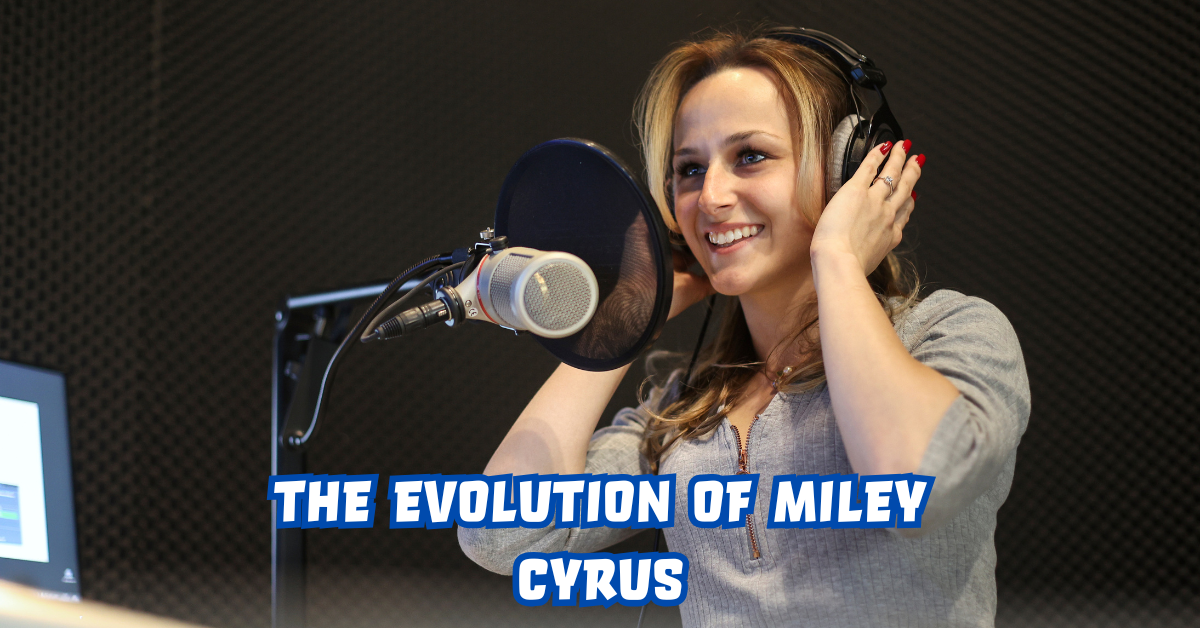Miley Cyrus has long transcended the definition of a typical pop star. From her early days as the bright-eyed Hannah Montana to her current status as one of music’s most fearless and influential figures, Cyrus’s journey represents both rebellion and reinvention. Within the first few years of her career, she shifted from Disney’s wholesome persona to a boundary-breaking artist unafraid to confront the world’s perceptions of femininity, sexuality, and freedom. For many, she is not just a singer but a mirror reflecting society’s evolving views on authenticity and self-expression.
Cyrus’s impact cannot be contained by a single genre or image. She has moved effortlessly from country-pop roots to hip-hop, rock, and psychedelic influences, reinventing her sound with every new era. Each transformation—whether through her sound, image, or public statements—has symbolized a deeper layer of personal growth. Her voice, at once raw and commanding, mirrors the turbulence and triumphs of her life.
This article delves into the full spectrum of Miley Cyrus’s evolution—her career milestones, creative risks, emotional depths, and her transformation into a cultural force who continues to shape the conversation about identity and artistry in the modern world.
The Beginning: Nashville Roots and the Birth of a Star
Born in 1992 in Franklin, Tennessee, Destiny Hope Cyrus was destined to perform. The daughter of country singer Billy Ray Cyrus, she grew up surrounded by the rhythm of guitars and the glow of stage lights. Even before the world knew her as Miley, she had music in her blood. Nashville’s country scene formed the foundation of her artistic instincts, combining emotional storytelling with unapologetic individuality.
Her breakthrough came when she was cast as Miley Stewart in Disney Channel’s Hannah Montana. The show’s premise—an ordinary girl living a double life as a pop star—reflected her real-life duality: the young Southern girl balancing fame and identity. Within a few years, she became a global sensation, selling millions of albums and selling out tours. Yet beneath the glamour, Cyrus began to feel confined by the manufactured image of perfection Disney demanded.
By the time she entered her late teens, Miley was ready to shed her scripted persona and reclaim her authenticity. Her evolution was inevitable—it was the only way she could continue to grow as both an artist and an individual.
Breaking Free: Reinvention and the Bangerz Era
Few transformations in pop culture were as dramatic—or as scrutinized—as Miley Cyrus’s shift during the Bangerz era in 2013. Gone were the country curls and teenage innocence; in their place stood a woman ready to reclaim her body, voice, and artistic control. Her music became louder, her fashion bolder, and her performances unapologetically provocative.
While critics accused her of shock value, Bangerz was, at its core, a statement of independence. The album’s fusion of hip-hop beats, Southern soul, and pop innovation reflected her refusal to conform. Songs like “Wrecking Ball” and “We Can’t Stop” showcased her newfound vocal power and lyrical vulnerability. She was no longer performing for approval; she was creating for self-expression.
“People change. Artists evolve,” Cyrus once said. “The hardest part is allowing yourself to outgrow who the world wants you to be.” That sentiment became the heart of her career: a constant balancing act between reinvention and staying true to herself.
Table 1: The Artistic Evolution of Miley Cyrus
| Era | Year Range | Key Album | Musical Style | Signature Theme | Cultural Impact |
|---|---|---|---|---|---|
| Hannah Montana | 2006–2010 | Hannah Montana 2: Meet Miley Cyrus | Teen Pop | Dual Identity | Global teen icon |
| Breakout Transition | 2010–2012 | Can’t Be Tamed | Dance-Pop | Freedom, Rebellion | End of Disney image |
| Bangerz Era | 2013–2015 | Bangerz | Pop, Hip-Hop | Liberation, Self-expression | Cultural redefinition |
| Younger Now | 2017 | Younger Now | Country, Pop-Rock | Nostalgia, Authenticity | Return to roots |
| Plastic Hearts | 2020 | Plastic Hearts | Rock, Synthpop | Empowerment, Resilience | Critically acclaimed reinvention |
Finding Balance: The Maturity of Younger Now
After the frenzy of Bangerz, Miley Cyrus returned with Younger Now in 2017—a reflective, almost meditative exploration of her roots and maturity. The sound was stripped back, the lyrics honest, and the tone softer. Gone were the flamboyant performances; instead, she embraced acoustic guitars and a sound reminiscent of the Nashville home that shaped her.
This era represented a turning point in her emotional and artistic journey. Cyrus reconciled her multiple selves—the Disney prodigy, the rebellious pop icon, and the woman searching for peace. She had nothing left to prove; instead, she wanted to connect. “I’m not reinventing myself,” she told an interviewer, “I’m rediscovering myself.”
In songs like “Malibu,” she sang of love, growth, and serenity—a contrast to the chaos of her earlier years. The maturity of Younger Now marked the arrival of an artist fully aware of her voice’s power and responsibility.
Plastic Hearts: The Rock Renaissance
When Plastic Hearts arrived in 2020, critics hailed it as Cyrus’s most complete and confident album. Blending 1980s-inspired synth-rock with modern pop sensibility, she channeled the grit of Stevie Nicks and the soul of Joan Jett. Her raspy vocals, honed through years of reinvention, found their truest home in this raw, electric sound.
Songs like “Midnight Sky” and “Prisoner” were not just chart hits—they were declarations of resilience. After navigating heartbreak, media scrutiny, and reinvention fatigue, Miley had emerged self-assured and unapologetic. Her voice became a weapon of liberation, her lyrics a reflection of endurance.
This era underscored her status as a cultural shapeshifter who could thrive in any genre. The combination of authenticity and artistic precision solidified her as more than just a pop star; she had become a symbol of creative freedom.
Table 2: Notable Achievements and Milestones
| Category | Achievement | Year |
|---|---|---|
| Chart Success | 10 Billboard Top 10 Singles | 2008–2023 |
| Awards | MTV Video Music Award for “Wrecking Ball” | 2014 |
| Philanthropy | Founded Happy Hippie Foundation for LGBTQ+ Youth | 2015 |
| Musical Reinvention | Released Plastic Hearts, her first rock-inspired album | 2020 |
| Influence | Named among Time’s 100 Most Influential People | 2014 |
Beyond the Stage: Activism and Advocacy
Miley Cyrus’s impact stretches far beyond music. Through her Happy Hippie Foundation, founded in 2015, she has become a vocal advocate for homeless youth, LGBTQ+ rights, and mental health awareness. Her activism is not performative; it is deeply personal. Having experienced fame’s pressures from a young age, Cyrus recognizes the importance of empathy and inclusion.
Her activism often mirrors her music—bold, unfiltered, and emotionally resonant. She uses her platform not merely to entertain but to empower. “If your voice has power, you have a duty to use it for others,” she has said. In an era where celebrity activism is often questioned, Miley’s efforts stand out for their sincerity and longevity.
She continues to merge art and advocacy, reminding the world that social change and creativity are not separate forces but interconnected expressions of truth.
The Voice That Redefined Modern Pop
One of Miley Cyrus’s greatest assets is her unmistakable voice—a blend of country twang, soulful rasp, and rock intensity. Unlike many pop singers who rely on production, Cyrus’s vocals carry a lived-in authenticity. Her voice conveys heartbreak, rebellion, and tenderness all at once.
From the emotionally charged delivery of “The Climb” to the raw vulnerability in “Slide Away,” her performances have grown more powerful with each phase of her career. She has matured into a vocalist capable of commanding stadiums while maintaining intimacy.
Vocal critics have compared her to Janis Joplin and Stevie Nicks, not just for tone but for spirit. Cyrus, like her predecessors, sings with the conviction of someone who has felt every lyric she delivers.
Miley Cyrus in the Modern Cultural Landscape
Today, Miley Cyrus represents more than a musician—she embodies the modern era’s contradictions and possibilities. She is both a rebel and a romantic, a provocateur and a poet. Her ability to navigate public scrutiny while retaining emotional authenticity makes her one of the most compelling artists of her generation.
Her influence extends into fashion, social commentary, and the broader narrative of female empowerment in entertainment. She challenges gender norms, celebrates fluidity, and encourages individuality in a world that often demands conformity. As pop culture evolves, Cyrus continues to remind audiences that transformation is not a betrayal of one’s past but a celebration of growth.
Quotes That Define Miley Cyrus
- “I don’t ever want to be predictable. I want to surprise myself as much as anyone else.”
- “It’s not about being perfect. It’s about being brave enough to show who you really are.”
- “The best part of growing up is realizing that change isn’t scary—it’s necessary.”
The Legacy of Reinvention
As Miley Cyrus enters new chapters of her life and career, her legacy continues to expand. She has broken barriers, shattered stereotypes, and redefined what it means to evolve publicly. Her resilience, combined with her artistry, positions her as an icon for generations who value authenticity over perfection.
Whether she’s singing a stripped-down acoustic ballad or commanding a rock anthem, one truth remains: Miley Cyrus has always belonged to herself. And that unwavering ownership of her identity is what makes her a true original in the history of modern music.
FAQs
1. What makes Miley Cyrus unique as an artist?
Miley Cyrus stands out for her fearless reinvention across genres, emotional honesty in her songwriting, and her advocacy for social causes, particularly LGBTQ+ rights and youth empowerment.
2. How did Miley transition from Hannah Montana to her independent career?
After Disney, she consciously broke free from her image with Can’t Be Tamed and later Bangerz, showcasing her desire for artistic control and self-expression.
3. What is Miley Cyrus’s most acclaimed album?
Critics often regard Plastic Hearts as her most accomplished album, blending rock and pop influences with emotional depth.
4. Is Miley Cyrus involved in philanthropy?
Yes, through her Happy Hippie Foundation, she supports homeless and LGBTQ+ youth, focusing on social equality and mental health.
5. What can we expect from Miley Cyrus in the future?
With her consistent reinvention, fans can expect more genre experimentation, meaningful collaborations, and continued advocacy for global issues.
Conclusion: The Power of Authentic Evolution
Miley Cyrus’s story is not one of rebellion for rebellion’s sake—it’s about courage, transformation, and truth. She has turned controversy into conversation and vulnerability into strength. From Nashville’s humble stages to the global spotlight, her journey represents the evolution of both a musician and a generation learning to embrace imperfection.
Her music, activism, and authenticity continue to inspire millions to stand firm in their identities. As Miley herself once said, “I’m still figuring it out—but that’s the beauty of being alive.”
Her evolution, unfiltered and unstoppable, is far from over.











